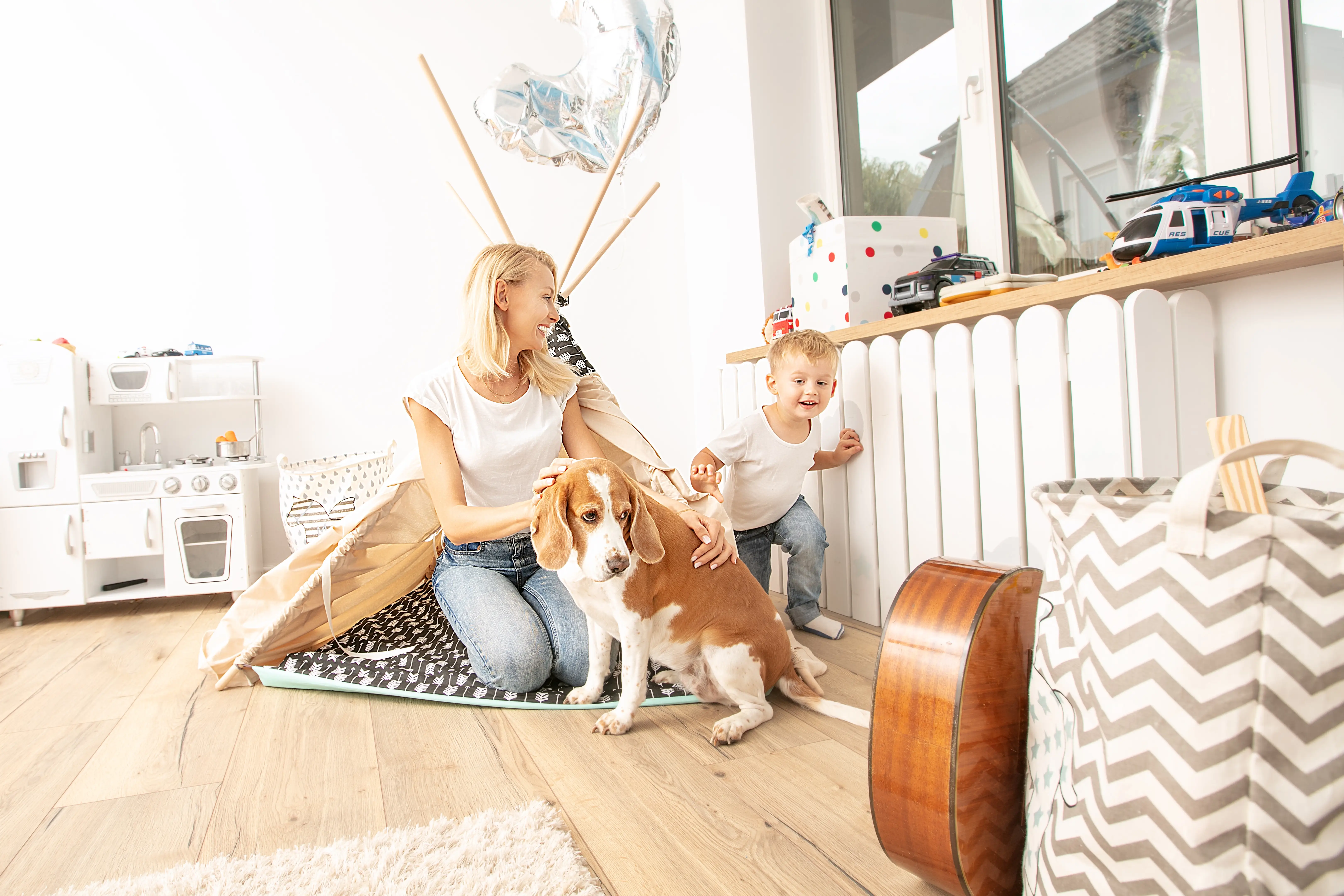How to Integrate a Dog Into Your New Home
Published on May 22, 2024 | 5 Minute read

Melanie
Ortiz Reyes
Content Specialist
Bringing a dog into a new home is an exciting time for both the pet and the owner. However, the transition can also be challenging. To ensure a smooth integration, you'll need to prepare properly and understand your dog’s needs. Here are some tips to help you and your furry friend settle comfortably into your new home.
Preparation Before Moving
Before moving in, ensure your home is safe for your dog by pet-proofing it. Secure any hazardous materials, such as cleaning supplies and medications, and make sure there are no small objects that could be swallowed. Check for any escape routes, like gaps in fences or windows that could be easily opened. Additionally, create a designated area for your dog to retreat to. This space should include their bed, toys, and water. Having a familiar spot can help your dog feel secure amidst the changes. It’s also important to stock up on necessary supplies, such as food, bowls, leashes, and grooming tools. Familiar items, like their old bed or favorite toys, can provide comfort in the new environment.
Moving Day
On moving day, try to maintain your dog’s regular feeding and walking schedule. Consistency helps reduce stress and provides a sense of normalcy. During the chaos of moving, keep your dog in a quiet, safe place. This could be a friend’s house, a kennel, or a secured room in the house. This prevents them from getting in the way or becoming overwhelmed by the activity.
Introducing Your Dog to the New Home
When you arrive at your new home, introduce your dog gradually. Start with one room, allowing them to sniff and explore before moving on to other areas. This helps them acclimate without feeling overwhelmed. Bringing items from your old home that carry familiar scents can provide a sense of comfort and familiarity. Pay attention to your dog’s behavior for signs of stress, such as excessive panting, whining, or hiding. Be patient and give them time to adjust.
Establishing a Routine
Maintain a consistent feeding and exercise routine. Regular walks and playtime help expend energy and reduce anxiety. This also helps your dog get used to their new surroundings. Gradually introduce your dog to new neighbors, pets, and areas. Positive interactions can help them feel more at ease. Be mindful of their comfort level and take it slow. Continue with any training or start new commands to reinforce good behavior. Training sessions can also serve as bonding time and mental stimulation.

Addressing Behavioral Issues
Moving can exacerbate separation anxiety. Practice leaving your dog alone for short periods and gradually increase the duration. Provide toys and distractions to keep them occupied. If your dog exhibits fear or aggression, it might be due to the stress of the move. Create a calm environment and consider consulting a professional trainer if the behavior persists. Even if your dog was housebroken before, they might have accidents in the new home. Be patient and reinforce housebreaking training. Clean any accidents thoroughly to prevent repeat incidents.
Health and Wellness
Locate a new veterinarian close to your home. Schedule a check-up to ensure your dog is healthy and update their records with the new address. Update your dog’s identification tags and microchip with your new address and contact information. This is crucial in case they get lost. Maintain a consistent diet and ensure your dog has access to fresh water at all times. Changes in diet can cause digestive issues, so it’s best to keep their food the same initially.
Creating a Dog-Friendly Environment
If you have a yard, make it secure and dog-friendly. Provide shaded areas, toys, and fresh water. Regularly check for any potential hazards. Ensure your dog has comfortable spots indoors, with access to their favorite resting areas. Keep their bedding clean and in a quiet location. Provide mental stimulation through toys, puzzles, and interactive games. This can prevent boredom and destructive behavior.
Building a Support Network
Join local pet owner groups or social media communities. This can provide support, advice, and opportunities for playdates. Consider hiring dog walkers or pet sitters if you have a busy schedule. Professional help can ensure your dog gets the care and attention they need. Have a list of emergency contacts, including a nearby veterinarian, animal hospital, and trusted friends or family members who can assist if needed.
Integrating a dog into a new home requires preparation, patience, and consistency. Remember, every dog is different, and some may take longer to acclimate than others. With time, your new home will feel like home for both you and your furry companion.